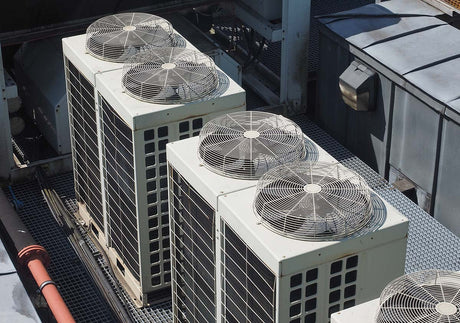In today's smart buildings,the HVAC PLC(Programmable Logic Controller)is no longer an optional component but the core of automation control for achieving efficiency,comfort,and energy savings.Through its powerful logic operations and precise control capabilities,it has fundamentally transformed the operation modes of traditional HVAC systems.So,how exactly is the HVAC PLC applied and what significant value does it deliver?

1.Precise Temperature Control
The HVAC PLC continuously monitors the indoor environment by connecting to temperature sensors.Once a deviation from the set temperature range is detected,the HVAC PLC immediately issues commands to control heating or cooling equipment accordingly.This automated feedback loop ensures a constant and comfortable indoor temperature while avoiding energy waste.
2.Intelligent Humidity Regulation
Beyond temperature,ambient humidity is equally important.By integrating humidity sensors,the HVAC PLC can control the operation of humidifiers or dehumidifiers,maintaining indoor humidity within a healthy and comfortable range.This effectively prevents discomfort and health issues caused by air that is too dry or too damp.
3.Dynamic Air Velocity and Volume Management
Within complex air duct systems,the HVAC PLC directly controls the fan operating frequency and damper openings.The system can dynamically adjust the air supply volume and velocity based on environmental demands,ensuring proper air distribution.This enhances comfort while significantly reducing fan energy consumption.
4.Flexible Multi-Zone Control
For large commercial buildings,a unified temperature standard cannot meet the needs of different zones.Leveraging its superior multi-point control capability,the HVAC PLC can divide the system into multiple independent zones.By controlling actuators like zone dampers and valves in each area,the HVAC PLC provides personalized temperature settings for each space,achieving"on-demand distribution."
5.Efficient Energy-Saving Mode Operation
The intelligence of the HVAC PLC is further demonstrated in its energy-saving strategies.It can automatically switch to preset energy-saving modes based on parameters such as outdoor temperature and humidity,and indoor occupancy.For instance,during non-working hours or when ambient conditions are favorable,the HVAC PLC will automatically reduce the system load and operate in a low-power state,thereby achieving substantial energy savings.
6.Reliable Fault Diagnosis and Alarm
System stability is paramount.Modern HVAC PLCs are equipped with comprehensive self-diagnostic functions,allowing them to monitor the operational status of various system components in real-time.When an anomaly occurs,the HVAC PLC immediately triggers an alarm and accurately indicates the fault location and type,significantly reducing maintenance personnel's troubleshooting and repair time,and ensuring long-term stable system operation.

Conclusion
From precise temperature and humidity regulation to intelligent energy consumption management,the application of the HVAC PLC permeates every aspect of modern HVAC systems.It is the key to achieving automation,intelligence,and green energy efficiency for these systems.Investing in a well-designed HVAC PLC control system is investing in long-term efficiency and comfort.

